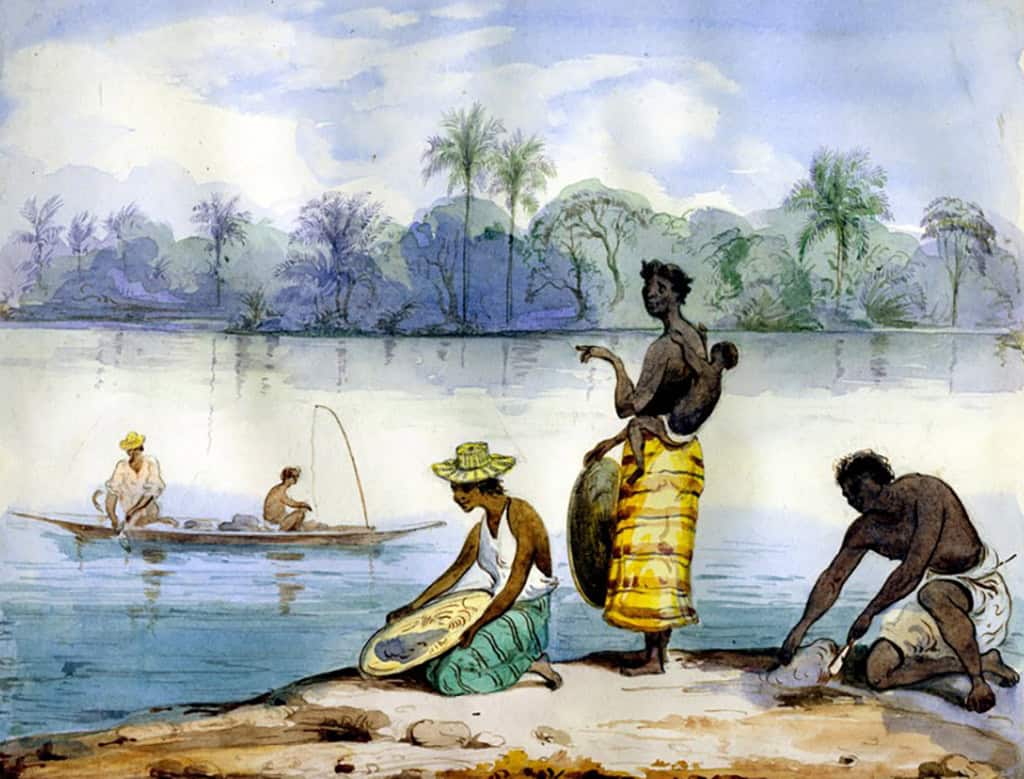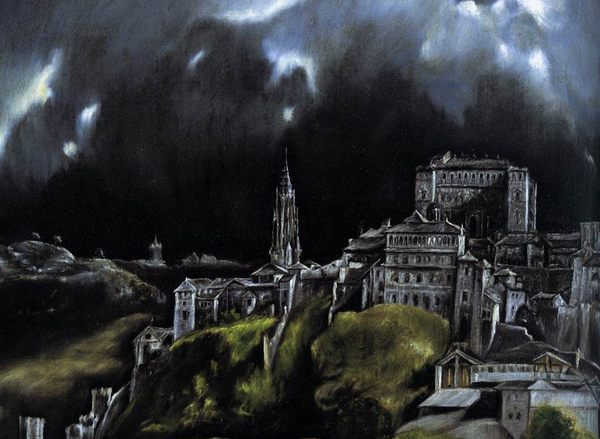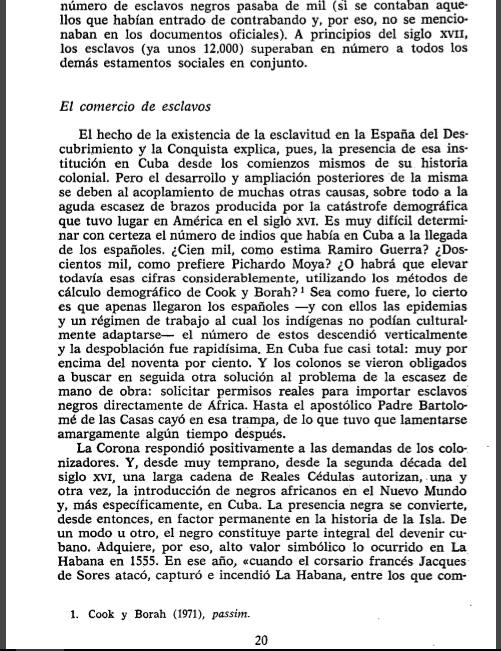One more time:
The
Alhambra Decree (also known as the
Edict of Expulsion;
Spanish: Decreto de la Alhambra, Edicto de Granada) was an
edict issued on 31 March 1492, by the joint
Catholic Monarchs of
Spain (
Isabella I of Castile and
Ferdinand II of Aragon) ordering the
expulsion of practising Jews from the Crowns of
Castile and
Aragon and its territories and possessions by 31 July of that year.
Though moor is a blanket term like “black”, they specifically expelled Jews from Spain. Dum diversas had nothing to do with expelling anyone
And who do you think was practicing this and eventually got put into slavery?
Dum diversas sanctioned to enslave a certain group of people and get them out of the Iberia. But that is not expelling?

play.google.com
Here are primary sources (manuscripts) linked by Dominican Studies Institute, The City College of New York, North Academic Center (NAC)). I post the links separated for you here, since you are a bit slow. Btw, the Wikipedia source as some funny clown shyt. And of course you aren't going to elaborate on those monarches, who you claimed were Black. smh
Manuscript No. 007
Date: 1503, March 29. Zaragoza, Spain Theme: Enslaved Blacks began to resist slavery practically since they arrived in La Española, by running away Source: PARES, Portal de Archivos Españoles--Archivo General de Indias, INDIFERENTE,418 L.1, 100R- 102V
Manuscript Transcription Translation Commentary Manuscript & Transcription Date: 1503, March 29. Zaragoza, SpainTheme: Enslaved Blacks began to resist slavery practically since they arrived in La Española, by running awaySource: PARES, Portal de Archivos Españoles–Archivo General de Indias...
firstblacks.org
Manuscript No. 008
Date: 1504, February 15. Medina del Campo, Spain Theme: Order by the Catholic Kings refusing to allow the free importation of slaves into La Española Source: PARES, Portal de Archivos Españoles, Archivo General de Indias,INDIFERENTE,418,L.1 – Imágenes Núm: 249/378, 250/
Manuscript Transcription Translation Commentary Date: 1504, February 15. Medina del Campo, SpainTheme: Order by the Catholic Kings refusing to allow the free importation of slaves into La EspañolaSource: PARES, Portal de Archivos Españoles, Archivo General de Indias,INDIFERENTE,418,L.1 –...
firstblacks.org
Manuscript No. 009 Date: 1505, September 15. Segovia, Spain Theme: Order from the Spanish Crown to La Española’s Governor Nicolás de Ovando, agreeing to send more Black slaves and mandating the enslaved Blacks available in the colony to be put to work in the gold mines Source: PARES, Portal de Archivos Españoles, Archivo General de Indias, INDIFERENTE, 418, L.1, F.180V-181V—1—Imagen Núm:
Manuscript Transcription Translation Commentary Manuscript & Transcription Date: 1505, September 15. Segovia, SpainTheme: Order from the Spanish Crown to La Española’s Governor Nicolás de Ovando, agreeing to send more Black slaves and mandating the enslaved Blacks available in the colony to be...
firstblacks.org
Manuscript No. 009
Date: 1505, September 15. Segovia, Spain Theme: Order from the Spanish Crown to La Española’s Governor Nicolás de Ovando, agreeing to send more Black slaves and mandating the enslaved Blacks available in the colony to be put to work in the gold mines Source: PARES, Portal de Archivos Españoles, Archivo General de Indias, INDIFERENTE, 418, L.1, F.180V-181V—1—Imagen Núm:
Manuscript Transcription Translation Commentary Manuscript & Transcription Date: 1505, September 15. Segovia, SpainTheme: Order from the Spanish Crown to La Española’s Governor Nicolás de Ovando, agreeing to send more Black slaves and mandating the enslaved Blacks available in the colony to be...
firstblacks.org
"The Christianized Blacks mentioned in the sixteenth-century documents issued in Spain, La Española and the rest of the Spanish empire were known as ladinos, and the term referred in general to the Blacks who were familiar in general with the religion, cultures, and languages of Castile or Portugal (either because of having been born and raised in those territories or due to long contact with or exposure to these cultures)."
"Conversely those Blacks with no familiarity with the Iberian cultures and languages, typically those brought straight from Africa, were called bozales.
As indicated here, during these first years of the colonization, the Spanish Crown tried to limit the arrival of Blacks into the Americas to ladinos, but the restriction lasted only a short time."
"From January 1502 there is evidence of at least one enslaved Black man being sent from Seville to La Española together with two other men, presumably free, to work in the extraction of gold under the orders of a fourth individual who was himself under a contract as a worker for a merchant of Seville.[1] Moreover on September 12th 1502, the Spanish monarchs authorized at least two royal court’s employees to organize a fleet to take provisions to the settlers established in La Española, explicitly allowing the organizers of the expedition to include ‘as many Blacks as they wanted,’ in what seems a clear reference to slaves.[2] According to Carlos Esteban Deive it is not known whether there was actually any shipment of enslaved Blacks made under the permit, but this stands as the first recorded royal license issued to import slaves into La Española."
"By late 1502 or early 1503 there was in La Española a large enough number of enslaved Blacks to begin worrying Governor Ovando about the incapacity of the colonists to prevent at least some slaves from escaping captivity. In response, Ovando requested to the Crown that no more Blacks be brought to La Española “because those that existed there had escaped.” (see Manuscript No. 007). The monarchs seem to have heeded the request immediately, since there is a response from them, in the form of a royal order of March 29, 1503 in which they promised to stop the sending of enslaved Blacks (“on this we will order to proceed as you say”)[4] and for a while after the 1503 royal promise to stop the importing of Black slaves into La Española there seems to have been no more sending of Blacks for over a year and a half. In February of 1504 the Crown reiterated the prohibition.[5] And still by October 1504 there were no new authorizations given for the transferring of Black slaves (“esclavos”) to La Española that we know of, though there was at least one case authorizing the sending of enslaved whites (“esclavos blancos”) on an expedition lead by Alonso de Ojeda.[6] (see Manuscript No. 008)."
Yet by the end of 1504 and in the following year, things changed. Not only had enslaved Blacks begun to be shipped to La Española again, but some of them were bozales.[7] In January of 1505 a carabela reportedly left from to Hispaniola carrying 16 Black slaves assigned to work in the colony’s mines.[8] Also governor Ovando seems to have changed his mind about importing Blacks. In September he was referred to in a Crown document as having requested the sending of “more Black slaves” to work the local gold mines of La Española.[9] (see Manuscript No. 009). He is said to have actually requested to the King that he send 20 more slaves.[10] The Crown responded positively to the request on September 15th, deciding to send a total of one hundred enslaved Blacks. Also in their response they explicitly confirmed that at the time there were already a number of Black slaves in the colony, by referring to them as “those that are there.” [11] In what seems an evident eagerness for obtaining more gold from the island, the Crown flatly ordered the governor to put those enslaved Blacks to work in the mines, and even offering them freedom as their reward if they worked to the Crown’s satisfaction for an undetermined number of years, a way, according to Deive, to try to prevent them from fleeing.[12] (see Manuscript No. 009).
"It is not clear whether the hundred slaves ever arrived in La Española, but it seems that at least between January and September of 1505 the 20 slaves requested by Ovando may have been received in the colony. In a communications of September 15 and 16, 1505 the King, in addressing the Casa de la Contratación indicated that Ovando had reported receiving 17 ‘Black slaves’ from the Casa (possibly the same group of slaves shipped in January of that year and referred to in the paragraph above) and was already requesting more.[13] In the letter the king reiterated his desire to have 100 slaves sent to the colony so that “all these gather gold for me.” [14] (see Manuscript No. 009). These slaves are supposed to have been from the Guinee region and to have been bought in Lisbon. [15] If that was the case, as Deive says, then it is likely that those slaves could have been bozales. Three more slaves had been supposedly sent to Ovando, shipped on July 16, 1505. And these would have completed the 20 requested. [16]"
(First Blacks in the Americas - Dominican Studies Institute, The City College of New York, North Academic Center (NAC))your nonsense away because you’re trying to get me to chase your tangents






















 y'all just standing around forever!
y'all just standing around forever!


